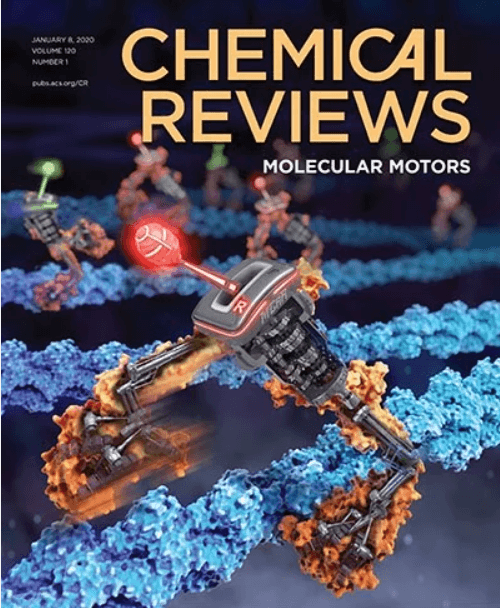Merocyanines:溶液、固态和气相中的电子结构和光谱学
IF 51.4
1区 化学
Q1 CHEMISTRY, MULTIDISCIPLINARY
引用次数: 0
摘要
Merocyanines 具有易于调整的电子结构,可以说是用途最广的功能性染料,通过改变供体/受体(D/A)端基团和 π 共轭聚甲基链,可以对其进行量身定制。它们具有多种光谱特性,如强溶变色性、高偏振性和超偏振性以及敏化能力,这些特性促使人们对它们在光电转换材料、非线性光学、光存储、荧光探针等领域的应用进行了广泛的研究。显而易见,了解内在的结构-性能关系是成功设计功能性染料的先决条件。对于花青素来说,这些规律性的探索已有 70 多年的历史,但直到过去 30 年,这些研究才从颜色和溶解变色理论扩展到其基态和激发态的电子结构。本综述概述了理解梅花翠类化合物多变性质所必需的基本原理,重点是了解内部(化学结构)和外部(分子间相互作用)因素对 D-π-A 发色团电子对称性的影响。在非极性多烯、理想多亚甲基和齐聚多烯这三种虚拟状态相互作用的背景下,回顾了不同介质中美花青素结构和性质的研究。本文章由计算机程序翻译,如有差异,请以英文原文为准。

Merocyanines: Electronic Structure and Spectroscopy in Solutions, Solid State, and Gas Phase
Merocyanines, owing to their readily tunable electronic structure, are arguably the most versatile functional dyes, with ample opportunities for tailored design via variations of both the donor/acceptor (D/A) end groups and π-conjugated polymethine chain. A plethora of spectral properties, such as strong solvatochromism, high polarizability and hyperpolarizabilities, and sensitizing capacity, motivates extensive studies for their applications in light-converting materials for optoelectronics, nonlinear optics, optical storage, fluorescent probes, etc. Evidently, an understanding of the intrinsic structure–property relationships is a prerequisite for the successful design of functional dyes. For merocyanines, these regularities have been explored for over 70 years, but only in the past three decades have these studies expanded beyond the theory of their color and solvatochromism toward their electronic structure in the ground and excited states. This Review outlines the fundamental principles, essential for comprehension of the variable nature of merocyanines, with the main emphasis on understanding the impact of internal (chemical structure) and external (intermolecular interactions) factors on the electronic symmetry of the D−π–A chromophore. The research on the structure and properties of merocyanines in different media is reviewed in the context of interplay of the three virtual states: nonpolar polyene, ideal polymethine, and zwitterionic polyene.
求助全文
通过发布文献求助,成功后即可免费获取论文全文。
去求助
来源期刊

Chemical Reviews
化学-化学综合
CiteScore
106.00
自引率
1.10%
发文量
278
审稿时长
4.3 months
期刊介绍:
Chemical Reviews is a highly regarded and highest-ranked journal covering the general topic of chemistry. Its mission is to provide comprehensive, authoritative, critical, and readable reviews of important recent research in organic, inorganic, physical, analytical, theoretical, and biological chemistry.
Since 1985, Chemical Reviews has also published periodic thematic issues that focus on a single theme or direction of emerging research.
 求助内容:
求助内容: 应助结果提醒方式:
应助结果提醒方式:


